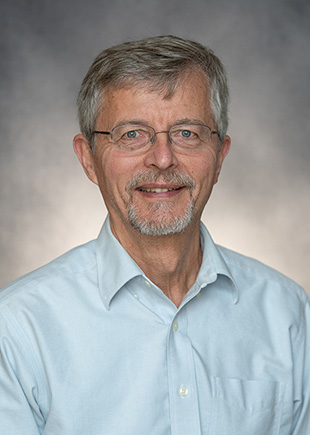
Education & Professional Experience
Ph.D.: California Institue of Technology (1982)
M.S.: California Institue of Technology (1980)
Professional Societies:
Fellow, American Physical Society
Fellow, American Vacuum Society
Honors and Awards:
Davisson-Germer Prize in Atomic or Surface Physics, 2019
American Physical Society Outstanding Referee, 2009
Alexander von Humboldt Foundation Research Award, 2000
Peter Mark Memorial Award of the American Vacuum Society, 1989
IBM Outstanding Innovation Award, 1987
Humboldt Visiting Professor, Technical University, Berlin (Germany), 2001
Professor of Physics, Carnegie Mellon University, 1995–
Research Staff Member, IBM Research, Yorktown Heights (NY), 1982–1995
Research Interests
The research activities of my group deal with structural and electronic properties of semiconductor materials and devices. A major tool used in the studies is the scanning tunneling microscope, which allows one to image the atomic structure of a surface and to perform spectroscopic measurements of the electronic energy levels. Many of the studies deal with semiconductor heterostructures consisting of multiple layers of different types of material, with the goal of understanding how the structure of the device (including imperfections and defects) determines its electronic properties. Growth of semiconductor heterostructures has been performed in my laboratory using molecular beam epitaxy, for GaN in particular (a semiconductor with a relatively large band gap, used for blue light-emitting devices and for microwave transistor applications).
Most recently we have focused on the study of two-dimensional (2D) materials, including graphene and hexagonal boron nitride (h-BN). We prepare these materials by growth at high temperatures, and we characterize them using both scanning tunneling microscopy and low-energy electron microscopy. The latter permits both diffraction and imaging of the surfaces, with nm-scale resolution. Additionally, spectroscopic observation of energy levels above the vacuum level is performed, which is particularly useful for these 2D materials. Heterostructures consisting of alternating layers of graphene and h-BN are being studied, because of the unique current-voltage characteristic for tunneling in such structures.
Recent Publications
Dacen Waters et al., Flat Bands and Mechanical Deformation Effects in the Moiré Superlattice of MoS2-WSe2 Heterobilayers, ACS Nano 14, 6 (2020)
Felix Lüpke et al., Proximity-induced superconducting gap in the quantum spin Hall edge state of monolayer WTe2, Nature Physics 16, 526 (2020)
Jun Li et al., Formation of Graphene atop a Si adlayer on the C-face of SiC, Phys. Rev. Mat. 3, 084006 (2019)
Yi Pan et al., WSe2 homojunctions and quantum dots created by patterned hydrogenation of epitaxial graphene substrates, 2D Mater. 6, 021001 (2019)
Rafik Addou et al., One dimensional metallic edges in atomically thin WSe2 induced by air exposure, 2D Mater. 5, 025017 (2018)
P.C. Mende, J. Li, R.M. Feenstra, Substitutional mechanism for growth of hexagonal boron nitride on epitaxial graphene, Appl. Phys. Lett. 113, 031605 (2018)
Yi Pan et al., Quantum-Confined Electronic States arising from the Moiré Pattern of MoS2-WSe2 Heterobilayers, Nano Lett. 18, 3 (2018)
Yu-Chuan Lin et al., Realizing Large-Scale, Electronic-Grade Two-Dimensional Semiconductors, ACS Nano 12, 2 (2018)
Randall M. Feenstra et al., Magnitude of the Current in Two-Dimensional Interlayer Tunneling Devices, J. Phys.: Condens. Matter 30, 055703 (2018)
Kehao Zhang et al., Large scale 2D/3D hybrids based on gallium nitride and transition metal dichalcogenides, Nanoscale 10, 336 (2018)
Shruti Subramanian et al., Properties of synthetic epitaxial graphene/molybdenum disulfide lateral heterostructures, Carbon 125, 551 (2017)
Wei Yan et al., Growth and electronic properties of nanolines on TiO2-terminated SrTiO3(001) surfaces, J. Appl. Phys. 122, 124305 (2017)
More Publications:
ORCID google scholar